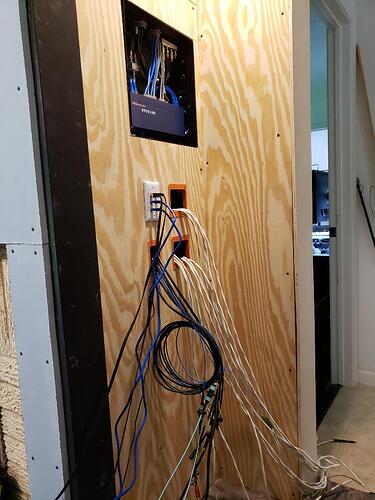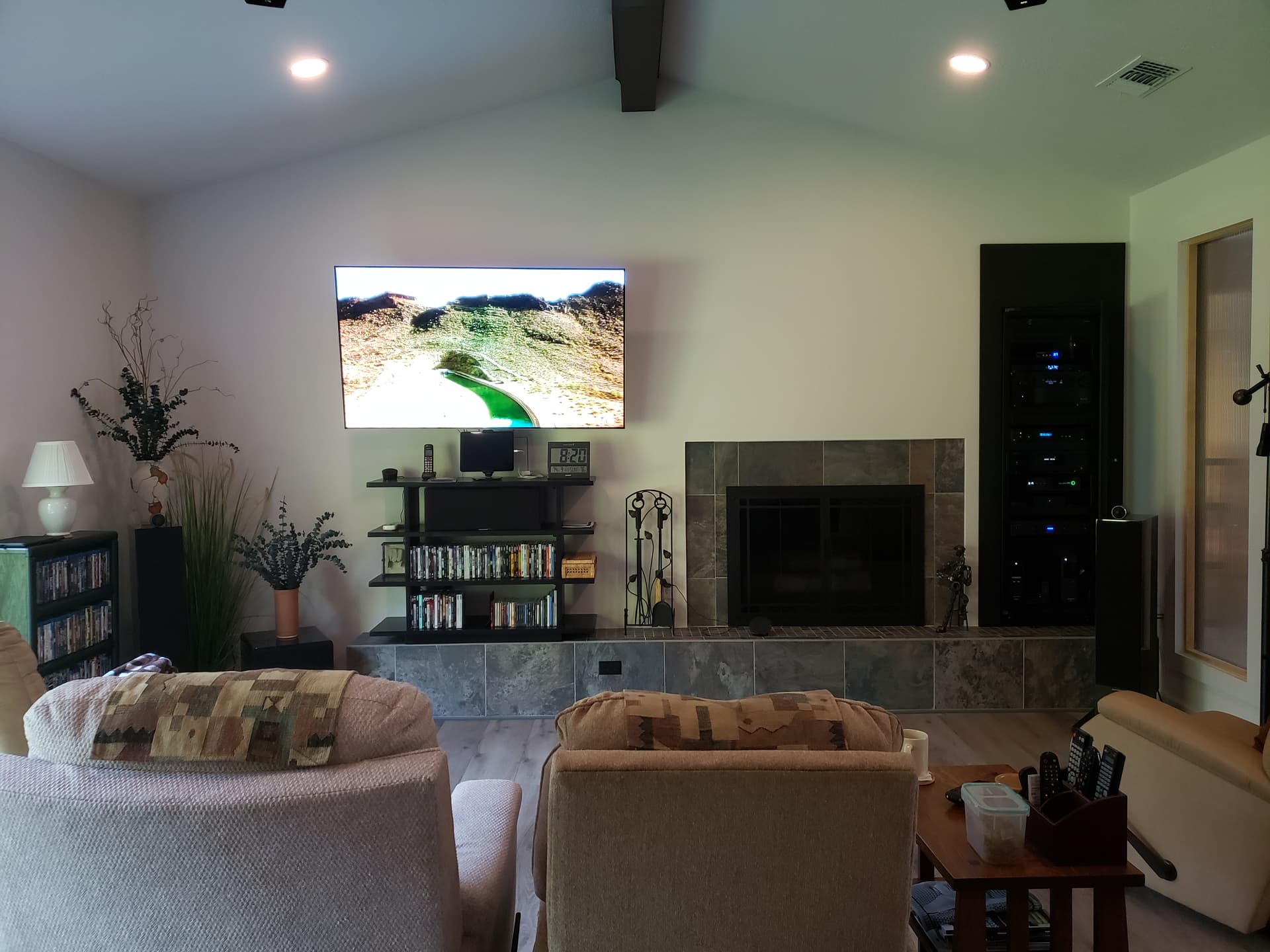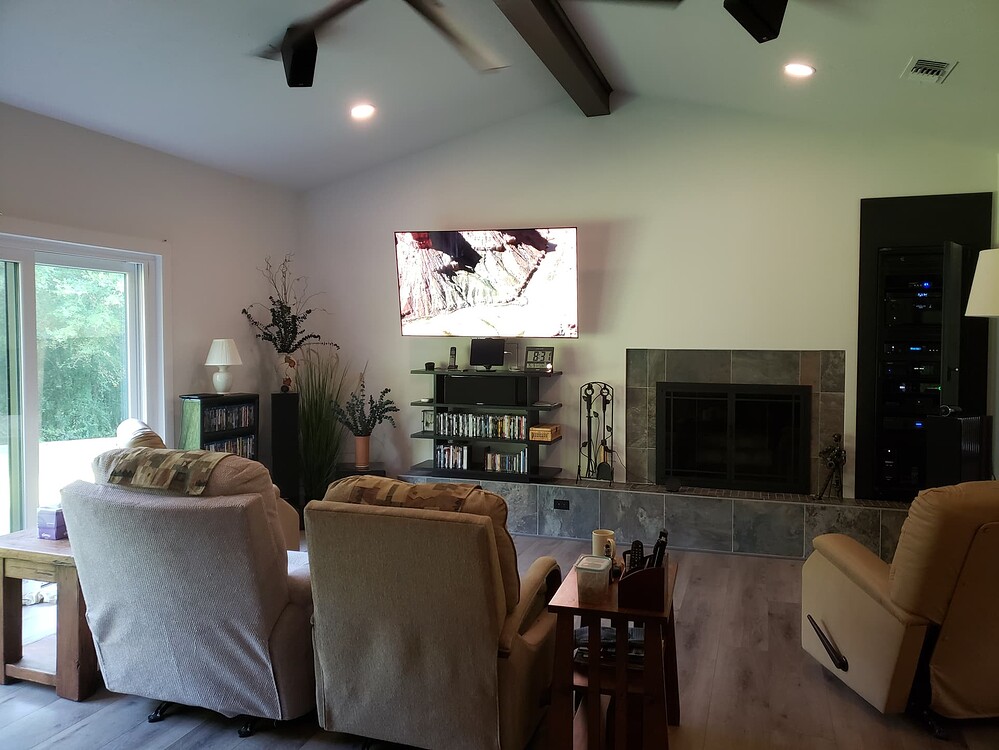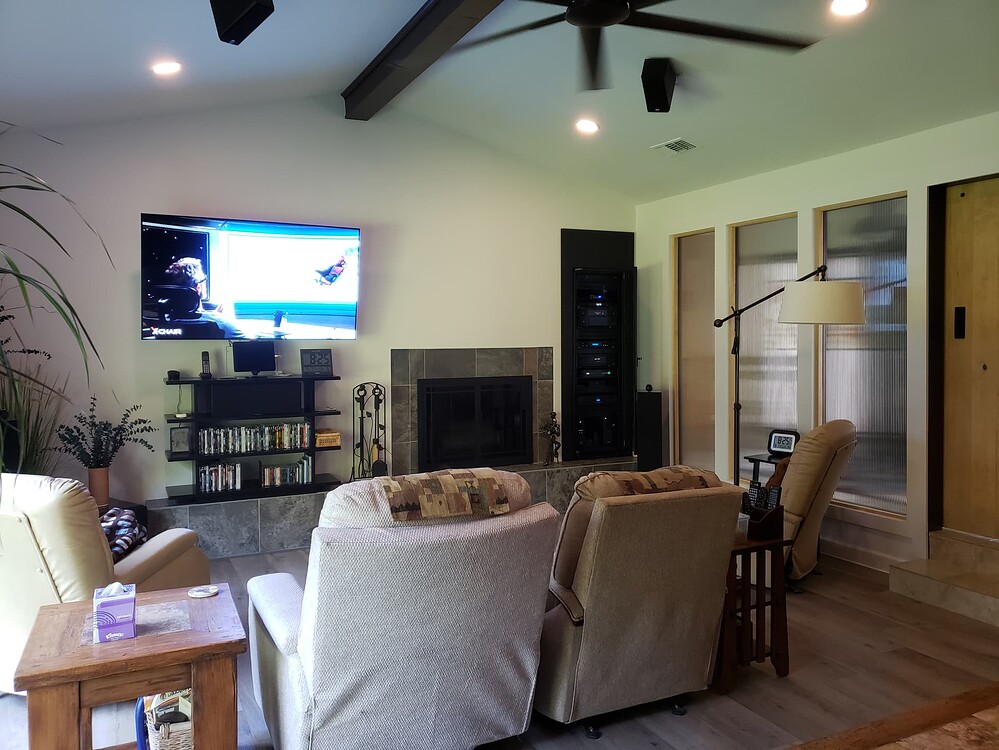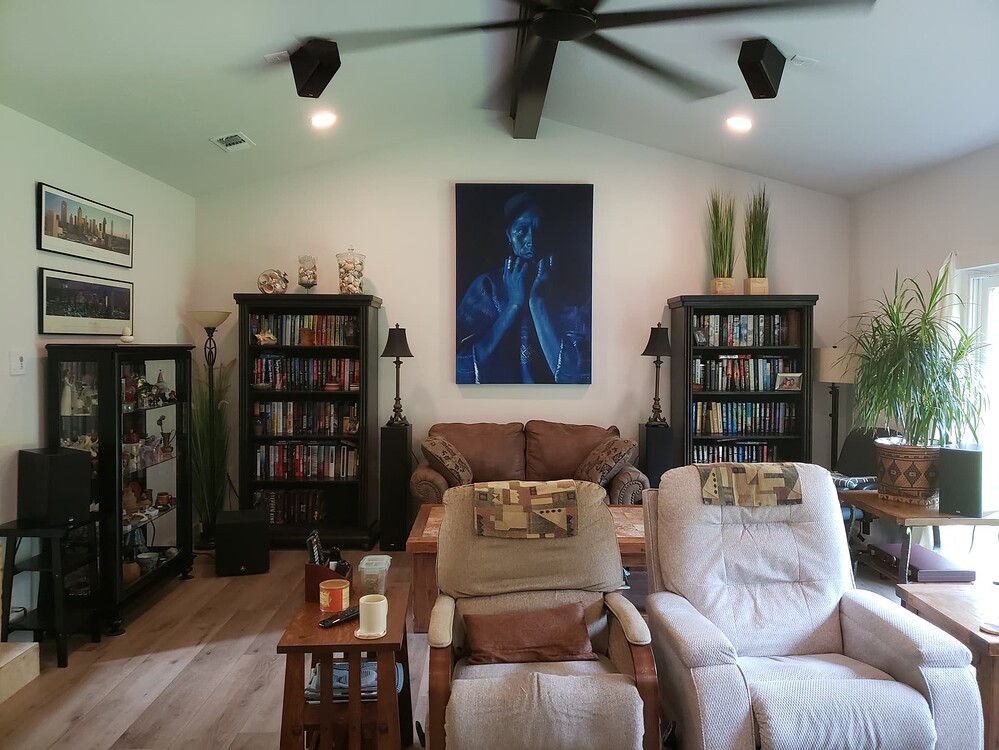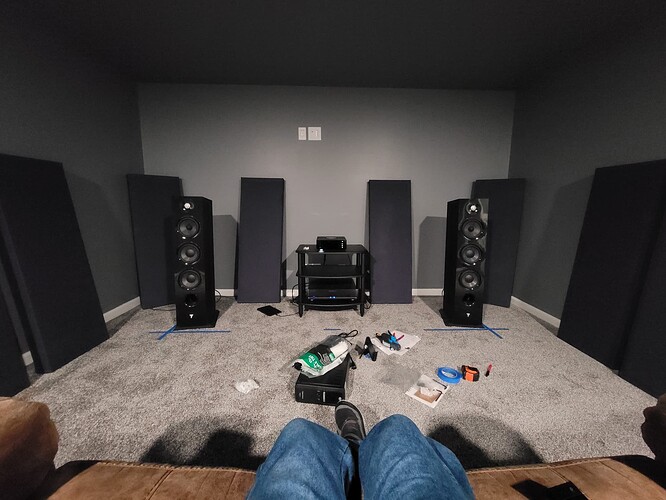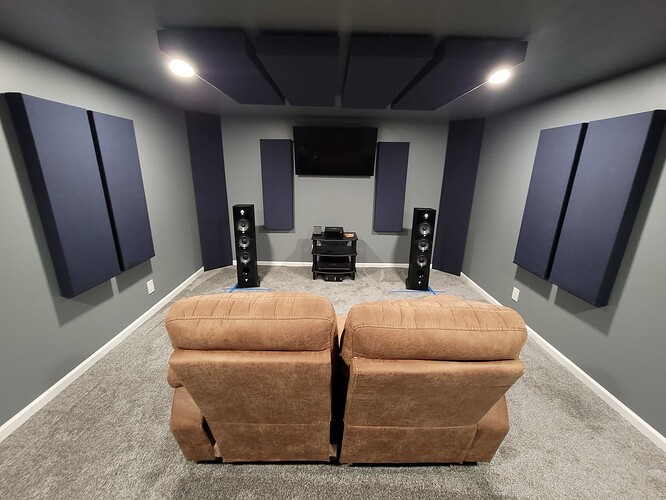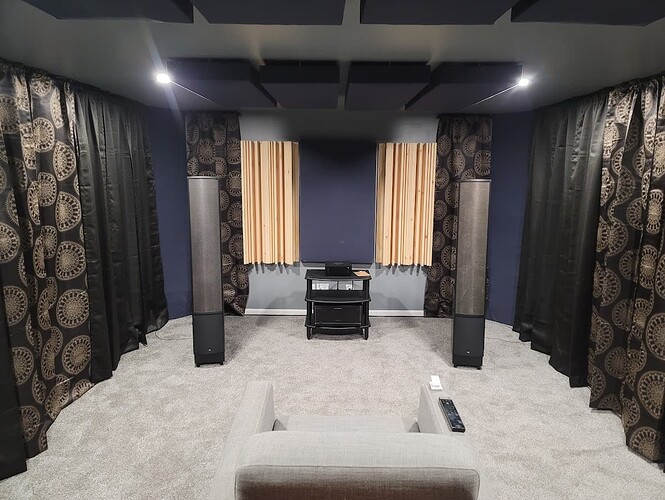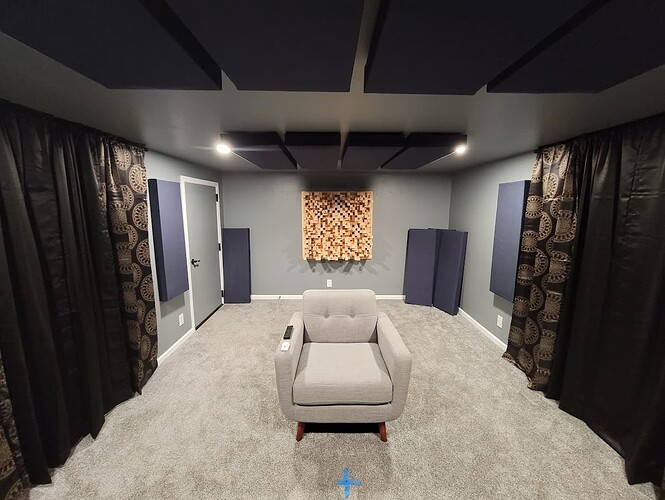Here’s the room after some upgrades:
Some observations I’ve had based off my experience with the room:
The perfect width for a 1-listener stereo setup is probably around 16’, the 12’ in this room is too narrow for speaker placement.
The ceiling height should be significantly taller ideally, 10-12’ would be ideal.
The depth (19’ in this case) seems to be of lesser importance, as long as it’s more than around 15-20’.
Given a from-scratch build, a trapagon shape (increasing width and height from front to back) would probably be ideal for addressing the room coloring the frequency response.
The hard walls (double 5/8" drywall) with mineral wool insulation behind make for an extremely well-isolated room, but definitely don’t help with footsteps above. This also allows for excellent acoustics, but is more echo-ey than a basketball court unless treated. In a perfect room, I think the walls, floor, and ceiling would all be concrete.
The room acoustics really need to be addressed specifically for the type of speakers you use, omnidirectional or dipolar. When done properly, there is no need for any digital correction of any kind. Ideally, you’d need a well-coordinated acoustical treatment system. All edges and corners would need traps, and primary and secondary reflection points would need absorption or diffusion. All parallel surfaces need to have some type of treatment. I had issues with high frequencies (15kHz+) that eventually was solved with putting up a line of curtains. The way you use absorption and diffusion, speaker placement, and speaker type affect the tonal balance, but with a perfect room you can tune it to your exact liking.
The ability to position the speakers and listening seat is incredible in this room, there’s at most a 1/8" deviation between L and R channel in any dimension, and the stereo image is ridiculous.
A perfect room would need to have some type of temperature regulation. My build has none (just opening the door), which makes it better sealed. The best solution would probably be a mini-split AC system just for the room, which is turned off when the room is in use.
The electrical setup in the room is already ideal IMO (I did this myself), as there are 3 front outlets on a dedicated 20A circuit, run with no sources of interference up to the panel. There are two additional 20A circuits for general use outlets. Given how much people spend on “audiophile” grade outlets and IEC power cables, it’s really important to get the electrical install right initially. For me, this has eliminated the need for any power conditioning, and there is NO audible hiss from my setup.
With a less limited budget, the “perfect” solution would be using an isolation transformer for the room, and a subpanel. It would be realistic to use 10AWG stranded wire to each circuit, and quality outlets (like a $3 Leviton Decora, not a $100 outlet). All stereo equipment should be either on the same circuit or at least the same phase, and nothing else on those circuits.
No comparison, it’s like night and day!
![]()
